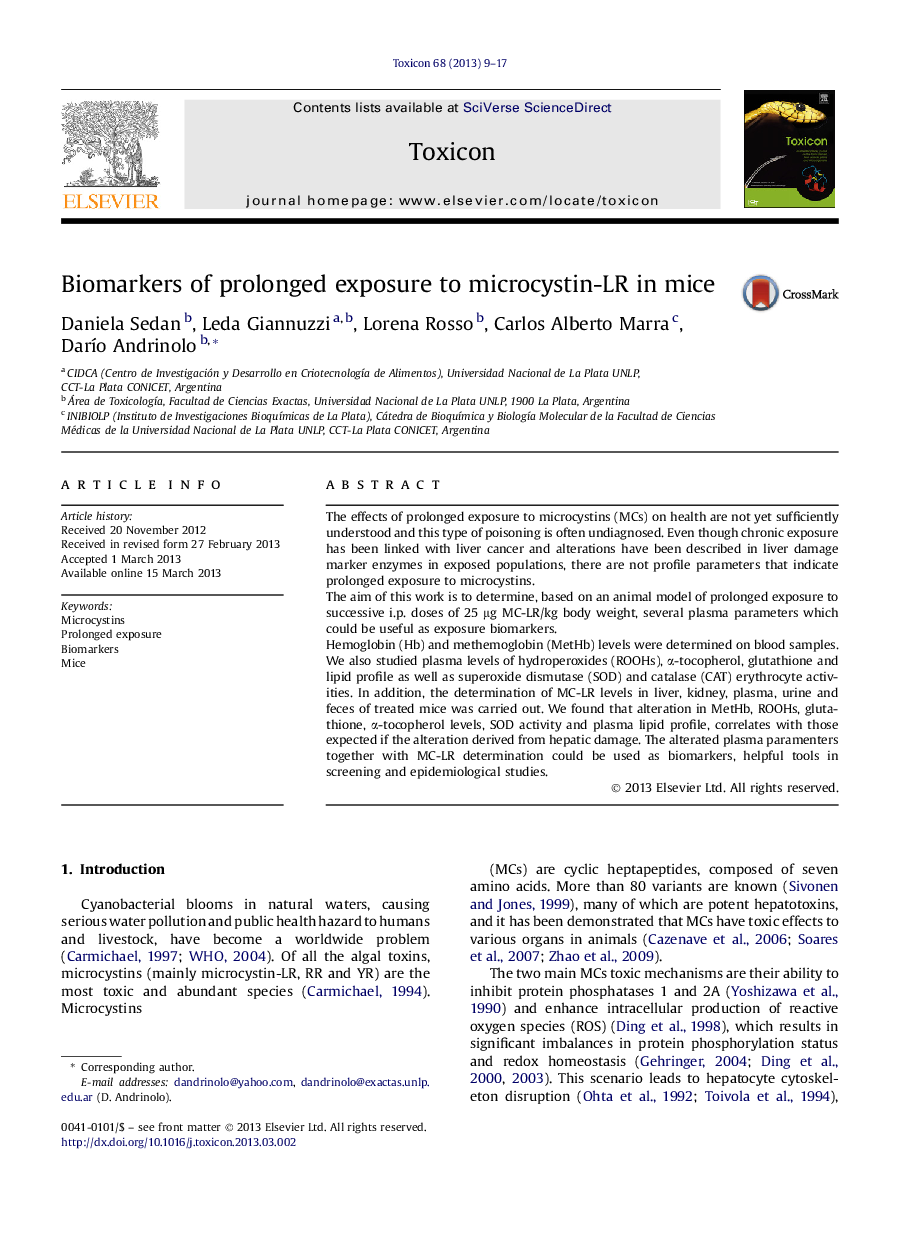| Article ID | Journal | Published Year | Pages | File Type |
|---|---|---|---|---|
| 2064682 | Toxicon | 2013 | 9 Pages |
•We studied MC-LR action at plasma levels in a prolonged MC-LR exposure mouse model.•We studied peripheral blood alterations related to redox status and lipid profile.•Increase in ROOHs and Methb levels evidence a pro-oxidative condition.•GSH, α-tocopherol levels, SOD activity and plasma lipid alteration were determined.•These parameters determined in plasma could be used as effect biomarkers.
The effects of prolonged exposure to microcystins (MCs) on health are not yet sufficiently understood and this type of poisoning is often undiagnosed. Even though chronic exposure has been linked with liver cancer and alterations have been described in liver damage marker enzymes in exposed populations, there are not profile parameters that indicate prolonged exposure to microcystins.The aim of this work is to determine, based on an animal model of prolonged exposure to successive i.p. doses of 25 μg MC-LR/kg body weight, several plasma parameters which could be useful as exposure biomarkers.Hemoglobin (Hb) and methemoglobin (MetHb) levels were determined on blood samples. We also studied plasma levels of hydroperoxides (ROOHs), α-tocopherol, glutathione and lipid profile as well as superoxide dismutase (SOD) and catalase (CAT) erythrocyte activities. In addition, the determination of MC-LR levels in liver, kidney, plasma, urine and feces of treated mice was carried out. We found that alteration in MetHb, ROOHs, glutathione, α-tocopherol levels, SOD activity and plasma lipid profile, correlates with those expected if the alteration derived from hepatic damage. The alterated plasma paramenters together with MC-LR determination could be used as biomarkers, helpful tools in screening and epidemiological studies.
